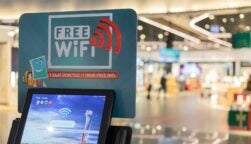Apple is planning to lay off over 700 employees from eight different locations, following the recent cancellation of ‘Project Titan’ – the company’s self-driving project which cost the company billions, and has been in the pipeline for over a decade.
Employees were given the chance to transfer to other divisions, including artificial intelligence and home robotics, but those who didn’t make the cut will be officially dismissed by May 27, according to a WARN notice recently filed in the state of California.
The news is a powerful reminder that hard times aren’t letting up in the tech sector just yet, despite many tech businesses showing green shoots of recovery throughout much of 2024. Here’s what we know so far.
Apple Makes Biggest Layoff Announcement Since the Pandemic
While the seismic wave of layoffs that upended the tech industry for much of 2022 and 2023 appears to have calmed, Apple has disrupted the status quo with a major round of dismissals that are likely to impact over 700 workers.
Out of the eight different locations that were affected in total, one was responsible for the company’s MicroLED display project, which intended to produce its own screens for iPhones, Macs, and smartwatches before being scrapped in March due to escalating costs.
 This just in! View
This just in! View
the top business tech deals for 2025 👨💻
However, the majority (371) of affected workers worked in the Santa Clara offices dealing with the company’s now-shuttered electric vehicle project. The secretive project – dubbed Project Titan by insiders – has been in the works since 2014. It originally aimed to develop a fully autonomous vehicle without pedals and a steering wheel, before switching its focus to electric vehicles in 2022.
News of the layoffs came after the Silicon Valley company told 1.400 workers in its autonomous car division that they have three months to find reassignments or they’ll be laid off. But what were Apple’s aspirations with its self-driving car project, and how did it go so wrong?
Why Did Apple’s Project Titan Fail So Badly?
While the idea of building a self-driving car was first conceptualized by Apple’s former CEO Steve Jobs and senior VP Tony Fadell in 2008, gears were officially put into motion with the launch of Project Titan in 2014.
In its decade-long life-span, Project Titan made several wins, including the acquisition of self-driving tech company Drive.ai, and a rumored partnership with Hyundai’s Kia. However, after encountering numerous bumps in the road, Apple was forced to push its launch date from 2024 to 2026, before officially canning the project this February.
Failure for the project has been blamed on attempting to build a fully autonomous vehicle that required no intervention from the driver – a feat that hasn’t even been achieved by electric vehicle (EV) powerhouse Tesla. By the time Apple engineers realized developing full-self-driving (FSD) cars was unfeasible with existing technology, it was too late to pivot. Ten years, and billions of dollars of wasted investment later, Apple employees appear to be paying the price.
Apple Continues to Invest in AI and Home Robotics
EV isn’t the only area where Apple is falling short. With the company famously lagging behind rivals when it comes to AI advancements, Microsoft officially overtook the iPhone manufacturer as the most valuable company in the world, due to its early lead in the race to monetize generative AI.
However, despite starting off on the back foot, Apple has made a number of strides in the field, including recently developing an AI model that’s able to understand conversational subtitles. The model, dubbed ReALM (Reference Resolution As Language Mode) will be used to improve Apple’s AI assistant, Siri, helping to improve the company’s competitive advantage over rivals like Samsung.
Apple is also rumored to be in the early stages of developing personal AI-enabled robotics to be used in homes. According to a recent report by Bloomberg, one robot is being programmed to follow people around the home and be helpful. The project is still in its infancy, however, so it is unclear when these devices will be available to the public.
These developments are part of Apple’s wider mission to bring generative AI into more of its products. But with many investors criticizing the company’s sluggish pace of AI development, much more work needs to be done before Apple can secure a steak in the rapidly expanding market.




